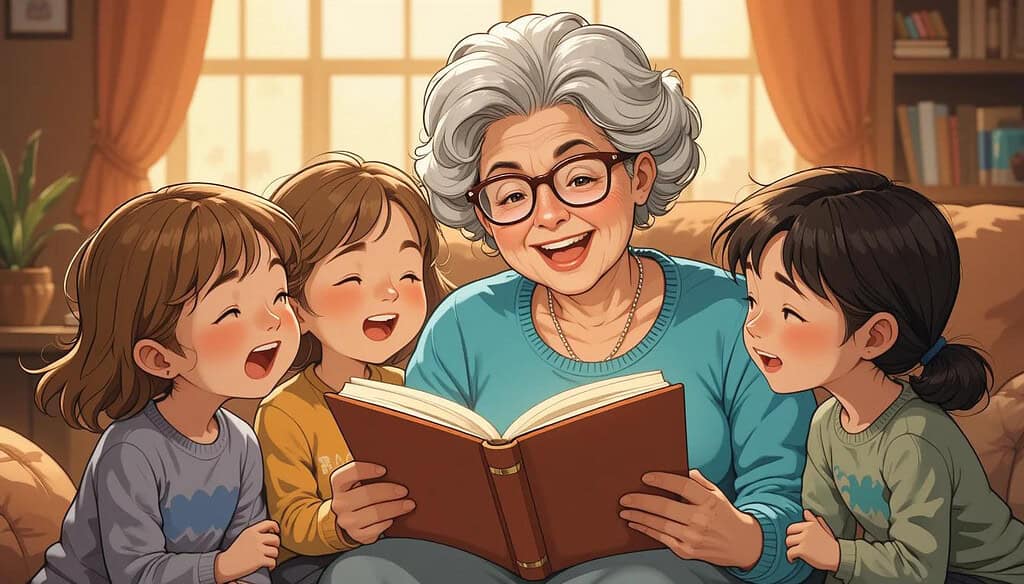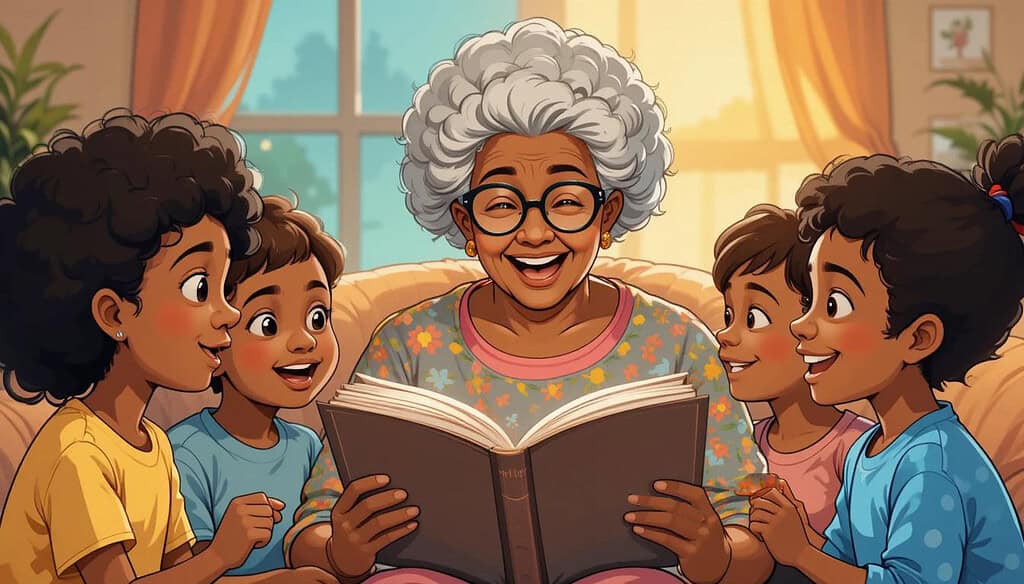Table of Contents
Power of Storytelling Formats

Stories are the glue that holds humanity together. From ancient fireside tales to the latest Netflix binge, stories have always been the way we connect, learn, and understand each other. But what’s fascinating is how these stories come to life through different storytelling formats. Each format, whether it’s a novel, a poem, or a podcast, offers a unique way to experience the human condition.
Think about it. Why does a novel feel so immersive, while a poem hits you with a single, unforgettable punch? Why does a podcast make you feel like you’re sitting across from the storyteller? It’s because storytelling formats aren’t just mediums; they’re experiences. They shape how we receive the story and, in turn, how we connect with its message.
Consider reflecting on your most cherished narrative. Is it a novel that captivated you entirely? A film that moved you to tears? A comic that elicited hearty laughter? The medium through which the narrative was conveyed significantly influenced its effect on you. All the storytelling formats possess unique advantages, be it the contemplative depth of prose, the vibrant imagery of graphic novels, or the shared experience of oral storytelling.
What makes storytelling formats so powerful is their versatility. They’re like different languages for the same story. The same tale can transform into a gripping screenplay, a heartfelt poem, or even an interactive video game. Each format reveals a new facet of the story, inviting us to explore it from different angles.
In this article, we’re going to dive into eight storytelling formats that have captured the human spirit for generations. Along the way, we’ll explore how these formats reflect our emotions, preserve our cultures, and bring us closer to each other. Whether you’re a storyteller yourself or someone who simply loves a good tale, there’s something here for you. So, let’s embark on this journey through the wonderful, diverse world of storytelling formats.
Exploring 8 Storytelling Formats: Capturing The Human Spirit

1. Prose: The Depth of the Written Word
Prose is the cornerstone of storytelling formats, the one most of us first encounter when diving into the world of stories. Whether it’s a novel, a short story, or even a well-crafted memoir, prose has this incredible ability to create entire worlds in your mind. Think about it: when you’re reading, the words on the page somehow transform into vivid images, feelings, and even smells. It’s like magic, but better, because it’s all happening inside your head.
What makes prose so unique is its depth. Unlike other storytelling formats, prose gives you the luxury of time and space. Authors can take pages to describe the simplest of moments, layering details that make you feel like you’re right there. Remember those times when you were so engrossed in a book that you lost track of time? That’s the magic of prose. It’s intimate and immersive, pulling you into a character’s thoughts, fears, and dreams in a way that feels deeply personal.
Another thing about prose is its versatility. It can be anything: a heart-wrenching love story, a spine-chilling thriller, or even a quiet exploration of the mundane. Each story comes alive in its own way. Take something like Jane Austen’s witty, dialogue-driven narratives versus Gabriel García Márquez’s lush, descriptive prose. Both are completely different, yet each captures something essential about the human experience.
Prose is also a fantastic medium for complexity. In novels and short stories, multiple characters can have conflicting perspectives, and you get to explore each one. It’s like being handed a kaleidoscope, where every turn gives you a new way of looking at the same picture. Storytelling formats like prose allow readers to dive deep, not just into the plot, but into the nuances of what makes people tick.
The unique significance of prose in the realm of storytelling lies in its inherent patience. It does not hasten the narrative; rather, it awaits your engagement, inviting you to immerse yourself in its content at your own pace. When crafted with skill, prose leaves a lasting impression that resonates deeply.
2. Poetry: Emotions in Rhythm and Rhyme
If prose is a sprawling canvas, then poetry is a single, striking brushstroke. Among storytelling formats, poetry is the one that cuts straight to the heart. It doesn’t waste time explaining; it just makes you feel. A few lines, carefully chosen, can hit you harder than an entire novel. That’s the beauty of poetry—it’s compact yet powerful.
Poetry has this way of distilling emotions into their purest form. A love poem doesn’t just tell you that someone is in love; it makes you feel the butterflies, the longing, the ache. A poem about loss doesn’t just recount events; it breaks your heart in a way that feels personal, even if you’ve never lived through that specific experience. This ability to evoke universal emotions while staying deeply personal is what sets poetry apart.
What’s also fascinating about poetry is its rhythm. Unlike other storytelling formats, poetry relies heavily on the sound of language. The way words flow, rhyme, and repeat can be as impactful as the meaning behind them. Think about how a simple repetition or a sudden change in rhythm can completely shift the mood of a poem. It’s like music for your soul, even when there’s no melody.
And let’s not forget the sheer variety within poetry. You’ve got everything from haikus to sonnets to free verse. Each style offers a different way to tell a story, proving once again that storytelling formats can be as diverse as the stories themselves. A haiku might capture a fleeting moment of beauty, while a sonnet could explore the depths of unrequited love. Free verse, on the other hand, throws out the rulebook altogether, giving poets the freedom to experiment and innovate.
But poetry’s true power lies in its honesty. Because it’s so stripped down, there’s no room for pretense. Poetry says what it means and means what it says. That’s why it’s often the storytelling format people turn to in moments of intense emotion. Whether it’s a wedding, a funeral, or a revolution, poetry is there to give words to what we’re feeling.
3. Dramatic Scripts: Life on Stage and Screen
Dramatic scripts are where storytelling formats take on a life of their own—literally. These stories are written to be performed, making them a unique blend of writing and acting. When a script comes to life on stage or screen, it’s like watching magic unfold right before your eyes.
Dramatic scripts are distinguished by their immediacy. In contrast to prose or poetry, scripts prioritize action and dialogue over extensive descriptions. This approach renders them exceptionally dynamic. Instead of merely reading about a character’s fury, you witness it manifest in a fervent confrontation. Rather than hearing about an individual’s sorrow, you observe it vividly reflected in their expressions as they articulate their emotions.
And then there’s the collaboration. Dramatic scripts are unique among storytelling formats because they’re not complete until they’re performed. A playwright or screenwriter might set the stage, but it’s the actors, directors, and even set designers who bring the story to life. It’s a collective effort, which means every performance can bring something new to the story.
Another thing that makes dramatic scripts so engaging is their ability to hold a mirror up to society. Whether it’s a play like Arthur Miller’s “The Crucible,” exploring themes of fear and mass hysteria, or a screenplay like “Parasite,” delving into class struggles, dramatic storytelling formats have a way of making us confront uncomfortable truths. They don’t just entertain; they provoke thought, spark conversation, and, sometimes, inspire change.
But dramatic scripts aren’t all heavy and serious. They can also be downright hilarious or heartwarmingly tender. Comedy, in particular, shines in this format. A well-timed joke or an awkward pause can have an entire audience roaring with laughter. That’s the magic of performance—it’s immediate and visceral in a way that few other storytelling formats can match.
And let’s not forget the visual aspect. On stage or screen, a dramatic script is paired with costumes, lighting, and music, creating a sensory experience that’s hard to forget. It’s storytelling in 3D, where every element works together to draw you into the story. In this way, dramatic scripts truly capture the essence of human emotion and connection, reminding us of the power of stories to move and inspire.
4. Graphic Narratives: Art Meets Storytelling
Graphic narratives are where visual art and storytelling collide to create something uniquely captivating. These storytelling formats go beyond words, blending images and text to craft layered experiences. They’re not just about superheroes saving the day—though that’s undeniably fun—but about weaving emotions, culture, and humanity into panels and speech bubbles.
Take a graphic novel like Maus by Art Spiegelman. It’s a deeply moving account of the Holocaust, using anthropomorphic characters to represent different groups of people. The artwork doesn’t just complement the story; it is the story. Every line, shadow, and frame adds to the gravity of the narrative. You don’t just read about the horrors; you see them unfold. That’s the magic of graphic narratives—they engage your senses in ways other storytelling formats can’t.
And then there are more modern takes, like Persepolis by Marjane Satrapi, where personal and political histories are intertwined in a stark, black-and-white aesthetic. The visuals amplify the emotion, making it impossible not to feel the weight of the author’s experiences.
Graphic narratives have also evolved into tools for education and activism. They’re accessible, visually engaging, and can make even the most complex topics digestible. Think about how comics have been used to teach history, science, or even emotional intelligence to younger audiences. They prove that storytelling formats can be as diverse and dynamic as the people who create them.
5. Oral Storytelling: The Power of Voice
Before books, screens, or podcasts, there was the human voice. Oral storytelling is the oldest of storytelling formats, a tradition as ancient as language itself. Imagine a group of people huddled around a fire, passing down tales of their ancestors, cautionary fables, or heroic adventures. That was how knowledge, culture, and history survived for generations.
The beauty of oral storytelling lies in its immediacy. A good storyteller can adjust their tone, pace, and even the story itself to match the audience’s mood. It’s a performance, a dialogue, and an art form all rolled into one. Think about how a simple bedtime story, told in a soothing voice, can transport a child to a magical land. That’s the essence of oral storytelling—it’s intimate and deeply personal.
In modern times, this tradition is alive and thriving in places like The Moth, where everyday people share extraordinary tales on stage. These stories aren’t polished or rehearsed to perfection; they’re raw, real, and human. You can hear the trembling voice of someone reliving a painful moment or the excitement of someone recounting their biggest triumph. It’s a reminder that storytelling formats don’t need flashy visuals or high-tech tools to make an impact—sometimes, all it takes is a voice.
Even podcasts, in a way, are a continuation of this tradition. Whether it’s a true crime series, a fictional drama, or an interview show, podcasts are modern-day campfires. They’ve redefined oral storytelling for a digital age, proving that the human voice is as powerful as ever.
6. Digital Storytelling: Innovation in Connection
Digital storytelling is the new kid on the block in the world of storytelling formats, and it’s already making waves. This format takes full advantage of the internet and multimedia, blending text, video, images, and sound to create interactive and immersive narratives. It’s storytelling on steroids, where the audience isn’t just a passive listener but often an active participant.
Take social media threads as an example. Have you ever read a Twitter thread that unfolded like a suspense novel? With each tweet, the story builds, keeping you hooked. Platforms like Instagram and TikTok have also turned storytelling into bite-sized visual feasts. Creators use music, filters, and clever edits to spin tales that resonate with millions in mere seconds.
But digital storytelling isn’t just about entertainment; it’s also about connection. Interactive websites, like those that let you “choose your own adventure,” put the power of the story in the hands of the audience. This format has been particularly revolutionary in fields like education, where students can learn history by virtually walking through ancient cities or solve mysteries using augmented reality.
Digital storytelling is fascinating because it opens up the process to everyone. With just a smartphone and internet access, anyone can share their story. This format removes obstacles, allowing voices that might have gone unheard to finally be expressed. In our increasingly interconnected world, the chance to share stories globally is more crucial than ever.
Digital storytelling formats are reshaping how we share and consume stories, but at their core, they still rely on the same timeless elements: a compelling narrative, relatable characters, and a connection to the human experience. It’s proof that even as technology evolves, storytelling will always be about what makes us human.
7. Audio Storytelling: Stories for the Ear and Soul
Audio storytelling is like the cozy corner of storytelling formats, where all you need is a good voice and a willing ear. There’s something almost magical about hearing a story unfold in the darkness of your room, on a long drive, or during a quiet walk. It takes us back to an era when people gathered around radios, hanging onto every word of a narrator. These days, podcasts and audiobooks have taken the torch, reviving the charm of spoken narratives while making them more accessible than ever.
What makes audio storytelling so powerful is its ability to create a personal connection. Unlike visual formats that demand your full attention, audio lets you immerse yourself in a story while folding laundry, jogging, or commuting. It’s multitasking, sure, but it’s also a deeply intimate experience. When you hear someone’s voice crack with emotion or pick up the subtle pause before a dramatic twist, it feels as if they’re speaking directly to you.
Take a podcast like The Moth, where real people share real stories. They’re not scripted or polished; they’re raw and heartfelt. The unfiltered voices and personal anecdotes remind us of the shared human experience. Similarly, audiobooks bring novels to life in ways that printed pages sometimes can’t. A talented narrator can make characters jump off the page, their emotions spilling out through subtle changes in tone and cadence.
Audio storytelling also shines in its versatility. Whether it’s a suspenseful true-crime podcast, an inspiring motivational speech, or an episodic audio drama, this format proves time and again that the human voice is a powerful medium for connection. In a world full of distractions, it’s a storytelling format that quietly commands attention and captures the soul.
8. Interactive Narratives: Choose Your Humanity
Interactive narratives are among the most groundbreaking storytelling formats of our time. They don’t just tell you a story—they let you live it. It’s one thing to read about a character’s choices and struggles; it’s another to make those choices yourself. Suddenly, the story isn’t just happening to someone—it’s happening to you.
Games like The Last of Us, for example, push this concept to its emotional limits. You’re not just watching Joel and Ellie’s journey; you’re navigating it. You make decisions that carry weight, not just for the characters but for how the story unfolds. It’s a reminder that storytelling isn’t just about the words on a page or the dialogue in a script—it’s about engagement. When players are emotionally invested in the outcomes, the impact is deeply personal and unforgettable.
But gaming narratives aren’t just about the big blockbuster titles. Even smaller indie games can deliver profoundly moving stories. Titles like Undertale or Journey rely on minimalist designs and simple mechanics to tell deeply emotional tales. They prove that you don’t need photorealistic graphics or a massive budget to connect with an audience.
What’s fascinating about this format is how it shifts the power dynamic between the storyteller and the audience. In interactive and gaming narratives, the audience isn’t just consuming the story—they’re co-creating it. It’s a collaborative effort where the storyteller lays the foundation, and the audience fills in the gaps with their decisions, imagination, and perspective.
Interactive storytelling formats are also evolving beyond traditional gaming. Choose-your-own-adventure books and Netflix’s Bandersnatch experiment show that this approach can work across different media. It’s a format that’s as versatile as it is engaging, proving that stories can be more than just heard or seen—they can be experienced.
This is the ultimate fusion of narrative and agency, a format that doesn’t just ask us to follow a story but to step inside it. Interactive and gaming narratives remind us that storytelling is a living, breathing art form, constantly adapting to how we connect with each other and the worlds we create.
Common Thread in Storytelling Formats

At first glance, the eight storytelling formats seem worlds apart. A dramatic stage play couldn’t be more different from a video game, and poetry feels like it belongs in a completely different universe than a podcast. But if you peel back the layers, there’s a thread that ties them all together—their ability to make us feel, connect, and grow as humans.
What’s the secret ingredient here? It’s empathy. Every storytelling format, no matter how different, invites us to step into someone else’s shoes. When you’re engrossed in a novel, you’re not just reading about a character; you’re living their life. When you hear a storyteller on a podcast baring their soul, it’s impossible not to feel their joy, pain, or hope.
Another fascinating commonality is how storytelling formats preserve culture. Oral storytelling, for example, has kept traditions alive for centuries, passing wisdom from one generation to the next. On the other hand, digital storytelling—a relatively new player—has become a vibrant platform for modern voices to share their truths. Yet, despite their differences in style and medium, both formats serve the same purpose: to capture and convey the essence of human experience.
Even the way these formats evolve speaks to their universality. Poetry might seem ancient, but its spirit is alive in today’s spoken word performances. Graphic novels are often seen as contemporary, yet they’re rooted in the ancient art of visual storytelling. It’s as if every format is constantly borrowing from the past while paving the way for the future.
What truly binds these storytelling formats is their universality. They transcend language, geography, and time. A powerful story told in any format has the ability to resonate, no matter who you are or where you’re from. And isn’t that the beauty of storytelling? It reminds us that, at our core, we’re not so different after all.
So, whether you prefer the immersive worlds of prose, the emotional beats of poetry, or the interactive depth of gaming narratives, remember this: the magic of storytelling isn’t in the format itself but in its ability to connect us. Every storytelling format is, in its own way, a bridge to understanding and belonging.
Enduring Relevance of Storytelling Formats

As we conclude this exploration of storytelling formats, it becomes evident that they serve as more than mere conduits for narratives. They embody our identities, our histories, and our aspirations for the future. Each format—be it a theatrical performance, an audio podcast, or a graphic novel—provides a distinct perspective on the human experience.
Why do these formats endure? Because they adapt. Oral storytelling, once the lifeblood of ancient communities, now thrives in podcasts and spoken word events. Prose, timeless and versatile, continues to captivate readers in print and digital forms. Even newer storytelling formats like interactive video games or social media threads are finding their place in the grand tradition of sharing human stories.
But it’s not just about adaptation; it’s about resonance. Each format has a way of speaking directly to our hearts. Poetry compresses vast emotions into a handful of lines. Dramatic scripts bring raw, unfiltered human conflict to life. Digital storytelling merges technology with creativity, crafting experiences that feel personal and universal at the same time.
As you think about the storytelling formats we’ve explored, consider what they’ve given you. Maybe it was a novel that changed your perspective, a play that left you speechless, or a podcast that made you laugh and cry on your morning commute. These formats don’t just tell stories; they leave imprints on our souls.
In a world that’s increasingly fast-paced and fragmented, storytelling remains a constant. It’s how we make sense of chaos, celebrate joy, and process grief. And as long as there are stories to tell, there will be storytelling formats to carry them forward.
So, here’s to the magic of storytelling formats—to their power to connect, heal, and inspire. No matter how the world changes, they will always remind us of one simple truth: we are all storytellers at heart.
Disclaimers: *This article is only for informational purposes. Do not make your decisions based solely on this article.




